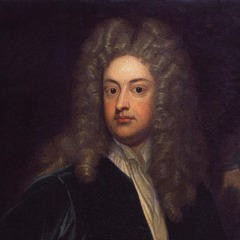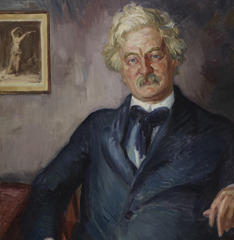Ralph Waldo Emerson Quotes - Page 24
Our knowledge is the amassed thought and experience of innumerable minds.
Ralph Waldo Emerson (1875). “Letters and Social Aims”, p.160
Taking to pieces is the trade of those who cannot construct.
Ralph Waldo Emerson (2010). “The Later Lectures of Ralph Waldo Emerson, 1843-1871”, p.73, University of Georgia Press
1850 Representative Men,'Napoleon, the Man of the World'.
Ralph Waldo Emerson (1911). “Lectures and biographical sketches”
Ralph Waldo Emerson (2014). “The Portable Emerson”, p.70, Penguin
Ralph Waldo Emerson, Barbara L. Packer, Joseph Slater, Douglas Emory Wilson (2003). “The Conduct of Life”, p.104, Harvard University Press
Ralph Waldo Emerson (1851). “Essays, lectures and orations”, p.55
A sect or party is an elegant incognito devised to save a man from the vexation of thinking.
Ralph Waldo Emerson (2014). “The Heart of Emerson's Journals”, p.49, Courier Corporation
Ralph Waldo Emerson (1870). “The Prose Works of Ralph Waldo Emerson”, p.565, Рипол Классик
Ralph Waldo Emerson, Walt McLaughlin (2010). “The Laws of Nature: Excerpts from the Writings of Ralph Waldo Emerson”, p.34, North Atlantic Books
Ralph Waldo Emerson (2005). “The Selected Lectures of Ralph Waldo Emerson”, p.301, University of Georgia Press
Ralph Waldo Emerson, Robert Ernest Spiller, Alfred Riggs Ferguson, Wallace E. Williams, Joseph Slater (1987). “The Collected Works of Ralph Waldo Emerson: Representative men: seven lectures”, p.11, Harvard University Press
Ralph Waldo Emerson (2013). “Delphi Complete Works of Ralph Waldo Emerson (Illustrated)”, p.2329, Delphi Classics
Ralph Waldo Emerson, David Mikics (2012). “The Annotated Emerson”, p.117, Harvard University Press
The sum of wisdom is that time is never lost that is devoted to work.
Ralph Waldo Emerson (2008). “The Spiritual Emerson: Essential Works by Ralph Waldo Emerson”, p.99, Penguin
Ralph Waldo Emerson (2003). “Nature and Other Writings”, p.177, Shambhala Publications
Ralph Waldo Emerson (1870). “The Prose Works of Ralph Waldo Emerson, Volume II”, p.123







